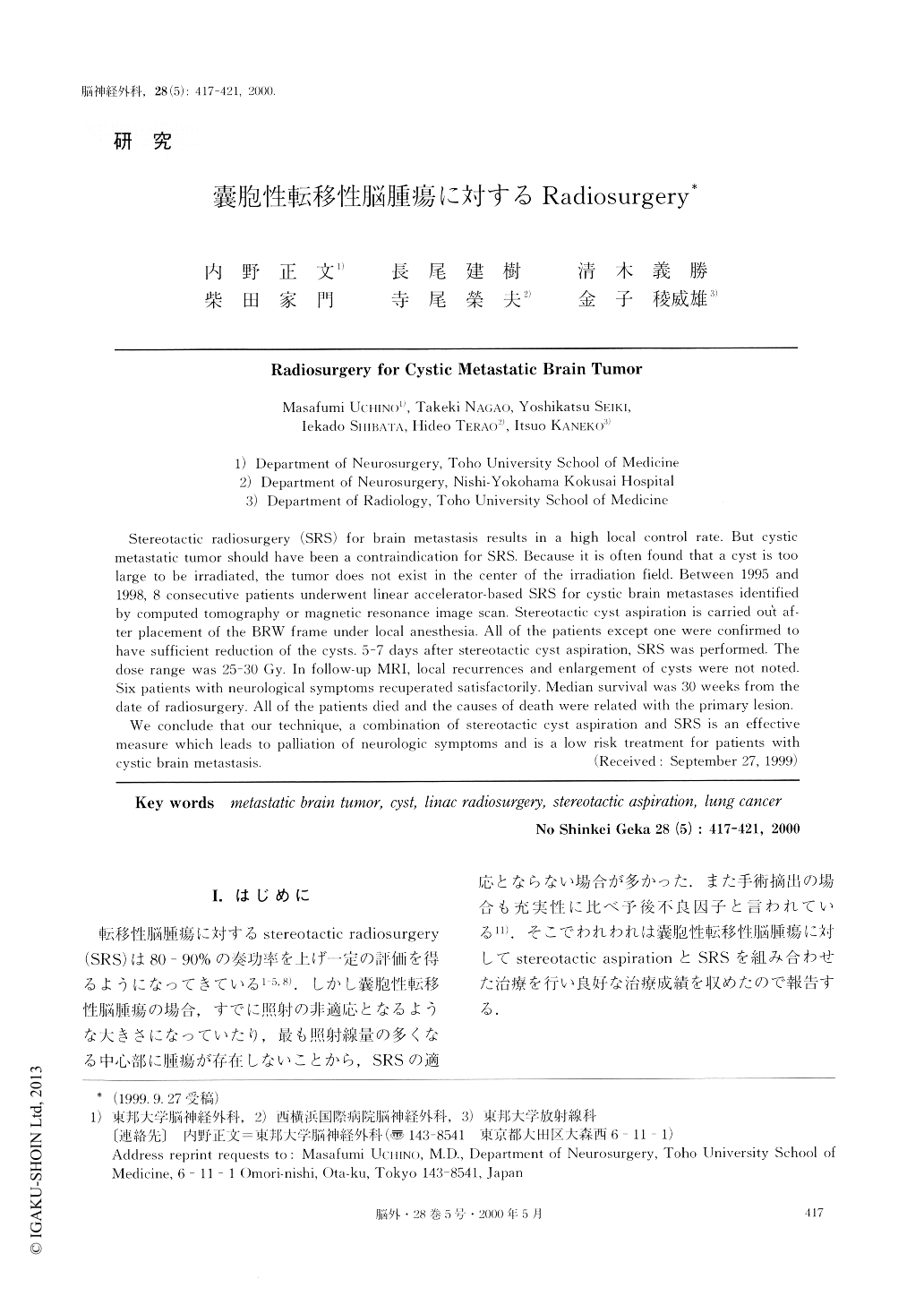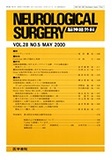Japanese
English
- 有料閲覧
- Abstract 文献概要
- 1ページ目 Look Inside
I.はじめに
転移性脳腫瘍に対するstereotactic radiosurgery(SRS)は80-90%の奏功率を上げ一定の評価を得るようになってきている1-5,8).しかし嚢胞性転移性脳腫瘍の場合,すでに照射の非適応となるような大きさになっていたり,最も照射線量の多くなる中心部に腫瘍が存在しないことから,SRSの適応とならない場合が多かった.また手術摘出の場合も充実性に比べ予後不良因子と言われている11).そこでわれわれは嚢胞性転移性脳腫瘍に対してstereotactic aspirationとSRSを組み合わせた治療を行い良好な治療成績を収めたので報告する.
Stereotactic radiosurgery (SRS) for brain metastasis results in a high local control rate. But cystic metastatic tumor should have been a contraindication for SRS. Because it is often found that a cyst is too large to be irradiated, the tumor does not exist in the center of the irradiation field. Between 1995 and 1998, 8 consecutive patients underwent linear accelerator-based SRS for cystic brain metastases identified by computed tomography or magnetic resonance image scan. Stereotactic cyst aspiration is carried out af-ter placement of the BRW frame under local anesthesia. All of the patients except one were confirmed to have sufficient reduction of the cysts. 5-7 days after stereotactic cyst aspiration, SRS was performed. The dose range was 25-30 Gy. In follow-up MRI, local recurrences and enlargement of cysts were not noted. Six patients with neurological symptoms recuperated satisfactorily. Median survival was 30 weeks from the date of radiosurgery. All of the patients died and the causes of death were related with the primary lesion. We conclude that our technique, a combination of stereotactic cyst aspiration and SRS is an effective measure which leads to palliation of neurologic symptoms and is a low risk treatment for patients with cystic brain metastasis.

Copyright © 2000, Igaku-Shoin Ltd. All rights reserved.


